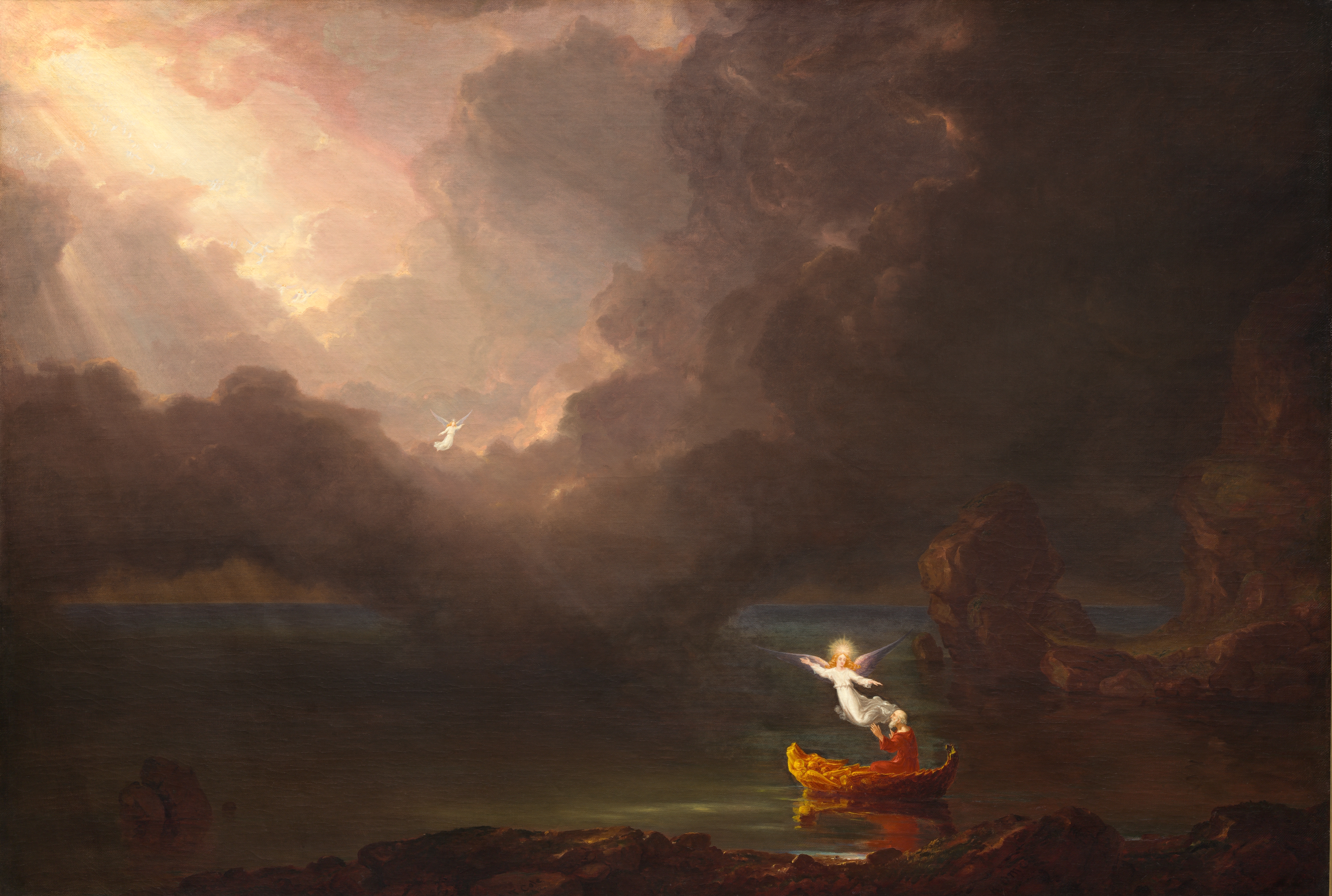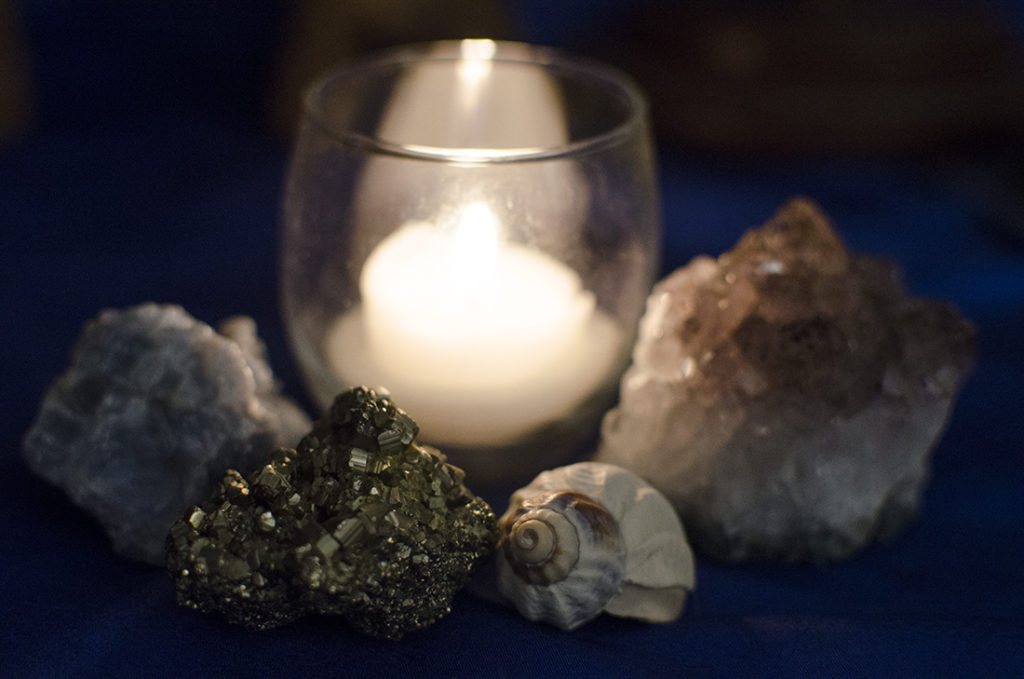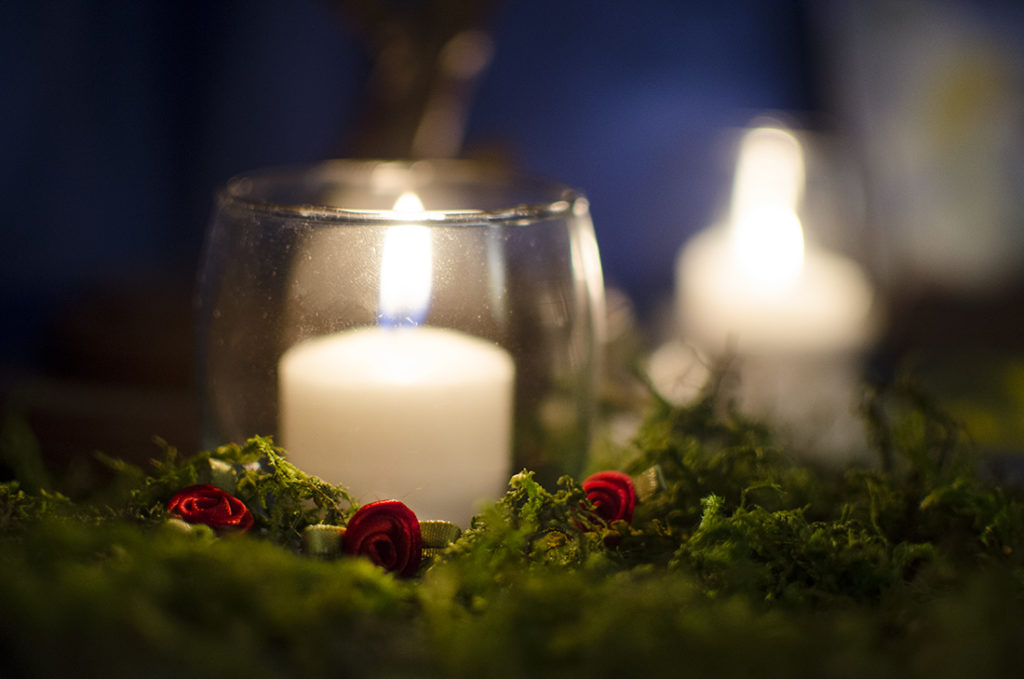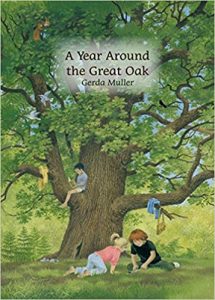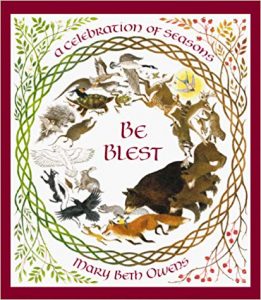
There is a sweet verse used in many Steiner (Waldorf) schools during the month of December that speaks of the lights of the four weeks of Advent and their relationship to a four-fold view of the natural world. Each week with its corresponding light ascends another rung on the ladder of existence, from the simplicity of the elements to the complexity of humanity, passing through the kingdoms of Stones, Plants, Beasts, and Man on its way.
The words of the Advent verse are simple, but they possess multiple facets that alter their meaning, depending on the angle from which one looks. From one direction, the verse offers an image of a well-ordered Creation unfolding, form upon form, from the depths of the void. Another aspect of the verse portrays a fallen world waiting for a Savior, with every grain of sand, every leaf, and every creature yearning for the arrival of Immanuel. And, yet another perspective envisions the way in which mankind’s exceptional four-fold nature finds its ultimate destiny and fulfillment in Truth, Goodness, and Beauty—that is, God alone.
An acquaintance recently advised me: “If something is good, baptize it.” The Advent verse may have its origins in the secular world, but it is good. And, I believe its goodness can be magnified with a few minor alterations in its wording (as I have done, below), and by elucidating the ways in which it offers a truly Catholic vision for the Advent season. This essay aims to show that the four-fold view of nature and man has deep and wide roots in the Catholic Church—with advocates ranging from great thinkers like St. Thomas Aquinas to wonderful communicators like Bishop Fulton Sheen—and that this hierarchical vision gestures toward the existence of something higher still above us: The Divine Life, or the Kingdom of the Spirit.Note 1
Advent Verse
The first light of Advent is the light of Stones,
the light that has existence in crystals, shells, and bones.
The second light of Advent is the light of Plants,
the light that lives and grows, that blossoms and enchants.
The third light of Advent is the light of Beasts,
the light that feels and moves, in creatures great and least.
The fourth light of Advent is the light of Man,
the light that thinks and wills, that seeks to understand.

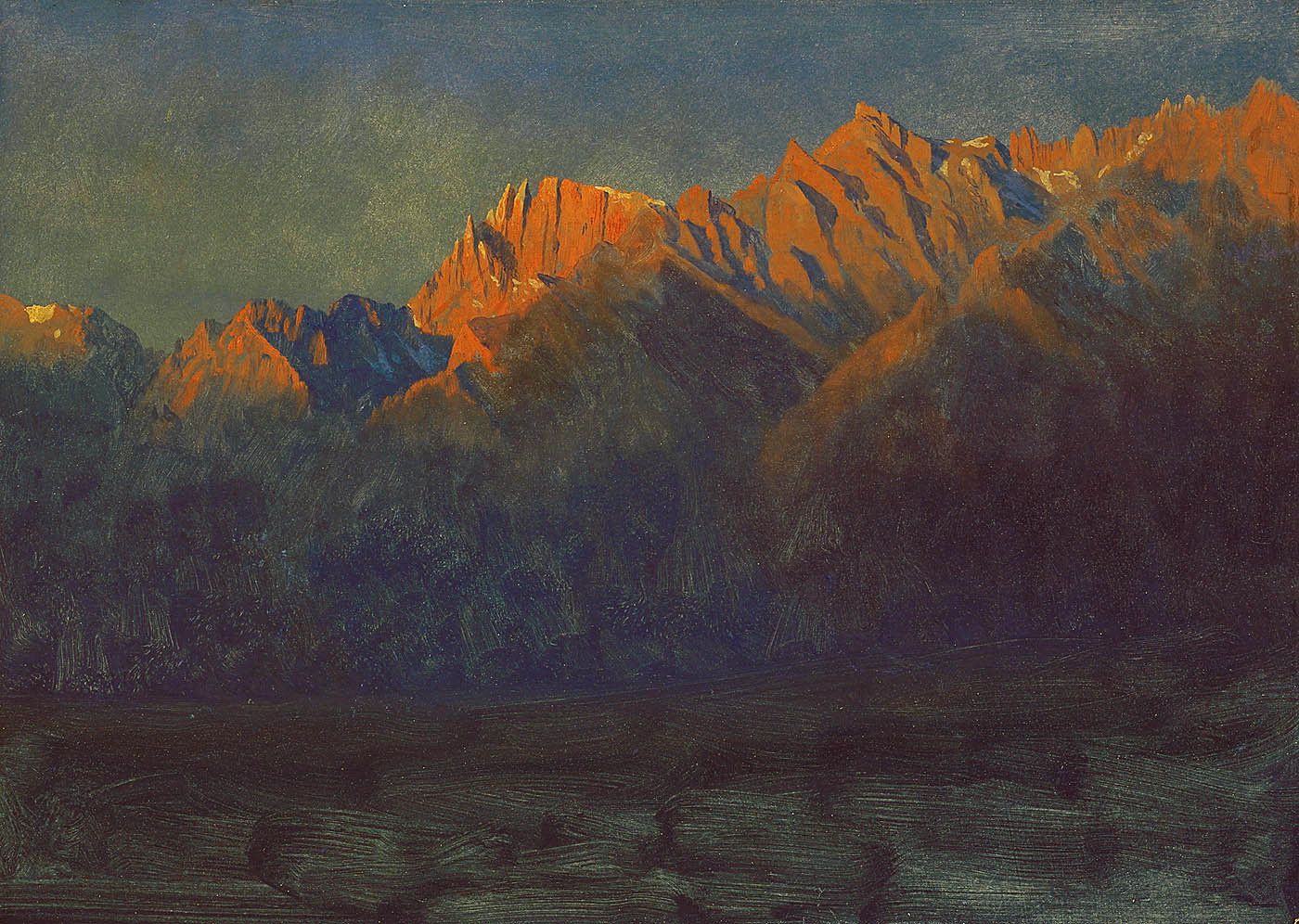
The First Light of Advent—Stones: In the beginning God created the heavens and the earth. The earth was without form and void, and darkness was upon the face of the deep; and the Spirit of God was moving over the face of the waters.—Genesis 1:1-2
And God said, “Let there be light”; and there was light. And God saw that the light was good; and God separated the light from the darkness. God called the light Day, and the darkness he called Night. And there was evening and there was morning, one day. And God said, “Let there be a firmament in the midst of the waters, and let it separate the waters from the waters.” And God made the firmament and separated the waters which were under the firmament from the waters which were above the firmament. And it was so. And God called the firmament Heaven. And there was evening and there was morning, a second day. And God said, “Let the waters under the heavens be gathered together into one place, and let the dry land appear.” And it was so. God called the dry land Earth, and the waters that were gathered together he called Seas. And God saw that it was good.—Genesis 1:3-10
Begin at the Beginning
In the Book of Genesis, we read that God separated the light from the darkness and created day and night. He created the oceans and the sky, the land, the plants, the creatures of the sea and air and land, and then man and woman . . . It has always amazed me how closely Christian cosmology, as told in Genesis, proceeds in lockstep with Earth’s evolutionary history as discovered by scientists in the more recent past.
Both the Biblical and the scientific narratives show the stages of our planet’s history proceeding in the same basic order as that of the Advent verse. First came the elements (Stones), then flora (Plants), fauna (Beasts), and hominids (Man). These grades of substantial form (in philosophical parlance) also find their reflection in the essential nature of human beings. Like the elements, we exist. Like the plants, we live and grow. Like the animals, we feel and move. However, it is man alone who has the power to think, to will, and to seek that which is true, good, and beautiful.
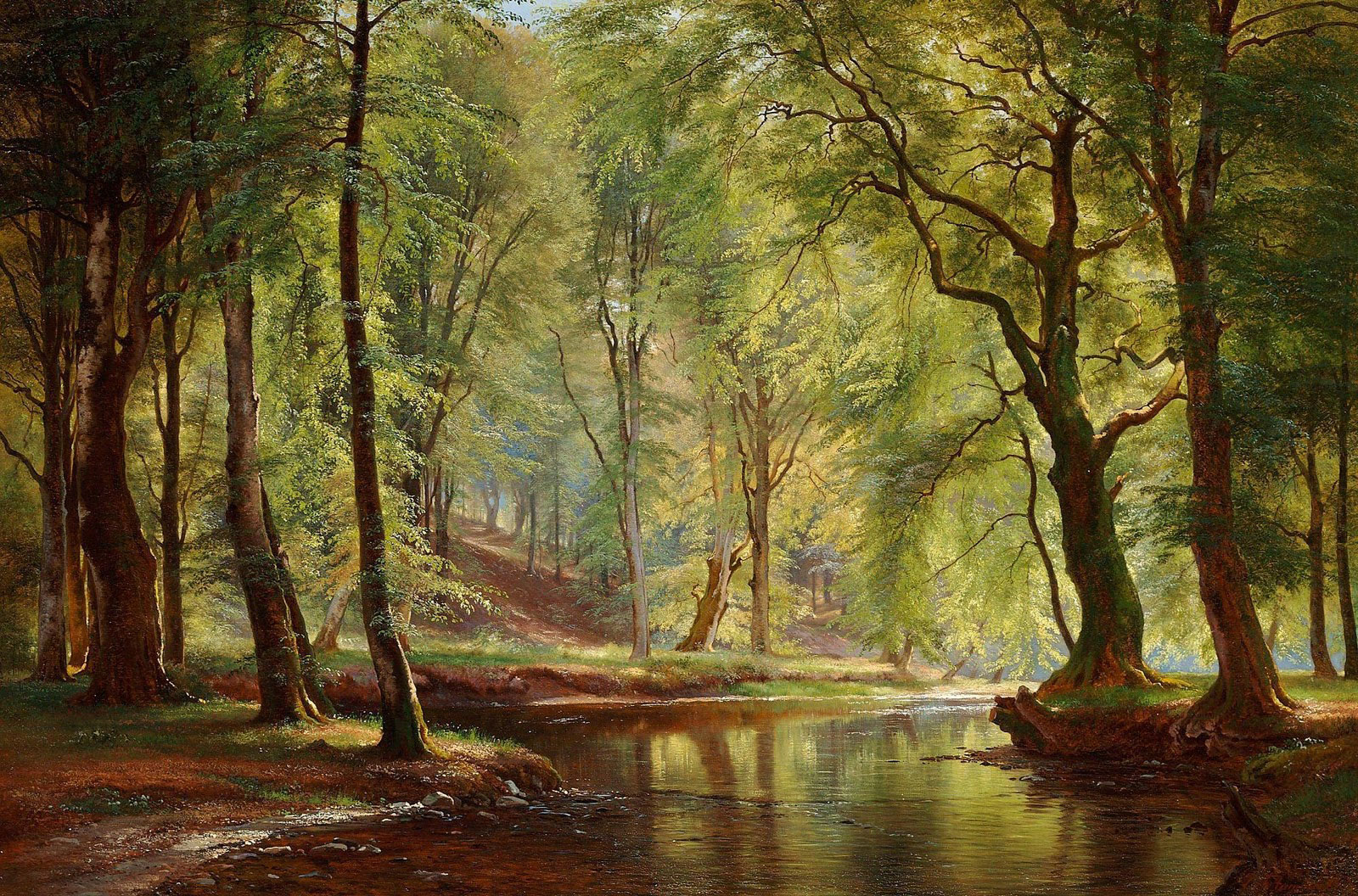
The Second Light of Advent—Plants: And God said, “Let the earth put forth vegetation, plants yielding seed, and fruit trees bearing fruit in which is their seed, each according to its kind, upon the earth.” And it was so. The earth brought forth vegetation, plants yielding seed according to their own kinds, and trees bearing fruit in which is their seed, each according to its kind. And God saw that it was good. And there was evening and there was morning, a third day.—Genesis 1:11-13
Aquinas’s Classical Anthropology
St. Thomas Aquinas, taking his cue from the ancient Greek philosopher Aristotle, saw the hierarchy of substantial forms as something akin to a hierarchy of perfection, with the elements being the least perfect (non-living). For Aquinas, plants represent the first degree of life, which can grow and reproduce. Animals occupy the second degree of life because they can feel and interact with their environment. The third degree of life, and the closest to perfection, belongs to man and is characterized by intellectual and spiritual potential.1
Aquinas also assigned to each level of the hierarchy a “cause” or a “reason why.” For example, the elements are elements because they exist and contain matter: Material Cause. Plants are plants because they live and have a unique form: Formal Cause. (In this case, form should not be confused with shape—form has more to do with the way in which a specimen remains itself throughout time, despite any perceivable outward changes.) Moving up the hierarchy, we find that animals are animals because they have mobility and sensation, and they have an effect on the world: Efficient Cause. Finally, at the top we find humankind, set apart from all other life on Earth because we alone are capable of knowing, willing, and striving to achieve the ultimate goal of union with God: Final Cause.2
These Four Causes play an important role in what is perhaps Aquinas’s most convincing “proof” for the existence of God. He posits that, since everything in the natural world (each Cause) is dependent on something that comes before it, then logically there must be a First Cause that set the whole thing in motion. Human beings, for example, depend on animals and plants for their existence; animals rely on plants; plants rely on the elements. It follows that there is a First Cause upon which even the elements depend. Aquinas insists that even an infinitely old universe would require the existence of an infinitely old God.3
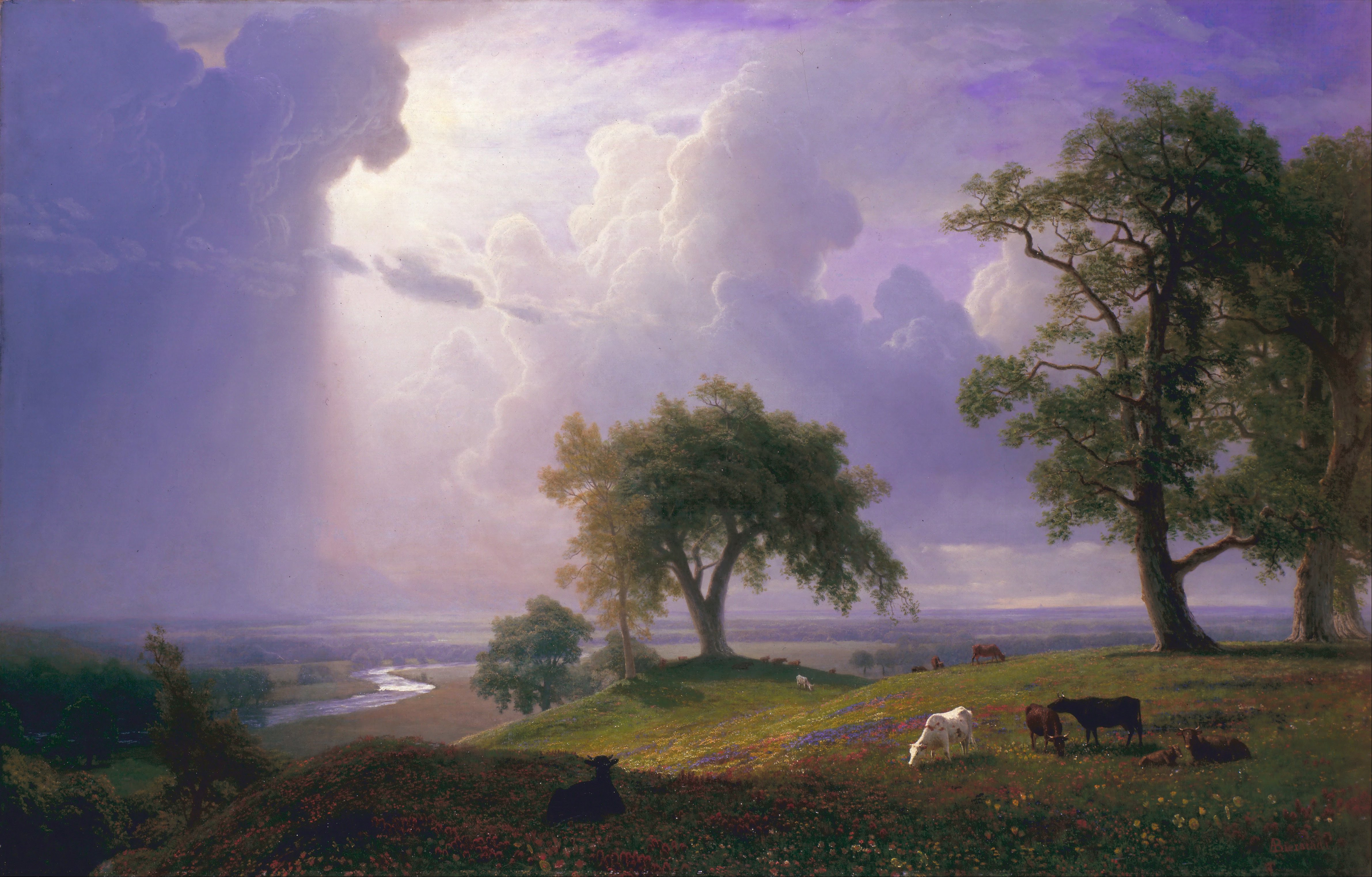
The Third Light of Advent—Beasts: And God said, “Let the waters bring forth swarms of living creatures, and let birds fly above the earth across the firmament of the heavens.” So God created the great sea monsters and every living creature that moves, with which the waters swarm, according to their kinds, and every winged bird according to its kind. And God saw that it was good. And God blessed them, saying, “Be fruitful and multiply and fill the waters in the seas, and let birds multiply on the earth.” And there was evening and there was morning, a fifth day.
And God said, “Let the earth bring forth living creatures according to their kinds: Cattle and creeping things and beasts of the earth according to their kinds.” And it was so. And God made the beasts of the earth according to their kinds and the cattle according to their kinds, and everything that creeps upon the ground according to its kind. And God saw that it was good.—Genesis 1:20-25
Mankind’s “Final Purpose”
Building on Aquinas’s classical anthropology, twentieth century evangelist Bishop Fulton Sheen noted that, while man holds many things in common with other degrees of life, he is not simply an aggregate of qualities rising up from the lower forms. He writes,
We are to some extent like the rest of creation. For example, we have existence, or being, like stones, oxygen, and sand. But man also has life, which makes him like flowers and trees, which vegetate and grow and reproduce. Man also has sense like the animal, by which he enters into contact with the great external environment, from the stars to the food that lies at his fingertips. But man has something unique; he is not just the sum of all of these. What man has peculiar unto himself is the fact that man is a thinking and a willing being. First of all, he can think thoughts that surpass the knowledge of the senses, for example, causes, the beautiful, or the relatedness between things. But he also has freedom. He can choose, decide, and determine his targets both near and far.4
For Sheen, the ladder of life and its relationship to man is not just a convenient ordering device, but in fact a herald that announces man’s “final purpose.” Sheen writes, “Life is full of romance and thrill when it has one overall purpose, namely, to be one with a Life that is Personal enough to be a Father; one with a Truth that is Personal enough to be the Wisdom from whence come all Art and Science; and one that is Personal enough to be a Love that is a ‘Passionless Passion, a wild Tranquility.'”5
How do we get to this one-ness from our present state? Again, Bishop Sheen offers a helpful way of understanding the situation using the Four Kingdoms. He begins with a question: Is it possible to move from a lower level of existence to a higher one? Yes, Sheen says, but “. . . if anything lower is ever to mount to a higher plane, two conditions are required: 1. The higher must come down to the lower, or there must be a descent from above. 2. What is lower must surrender its lower existence to what is above it.”6
If an element is to ascend to a higher plane, then a plant must reach down and absorb the element and assimilate it into its being. For a plant to move to a higher level, then an animal must come down and take it into itself. Animals can only ascend to the level of man if they are killed and consumed. In each case, a death in the lower kingdom must occur in order to make ascension to the new level of existence possible.7
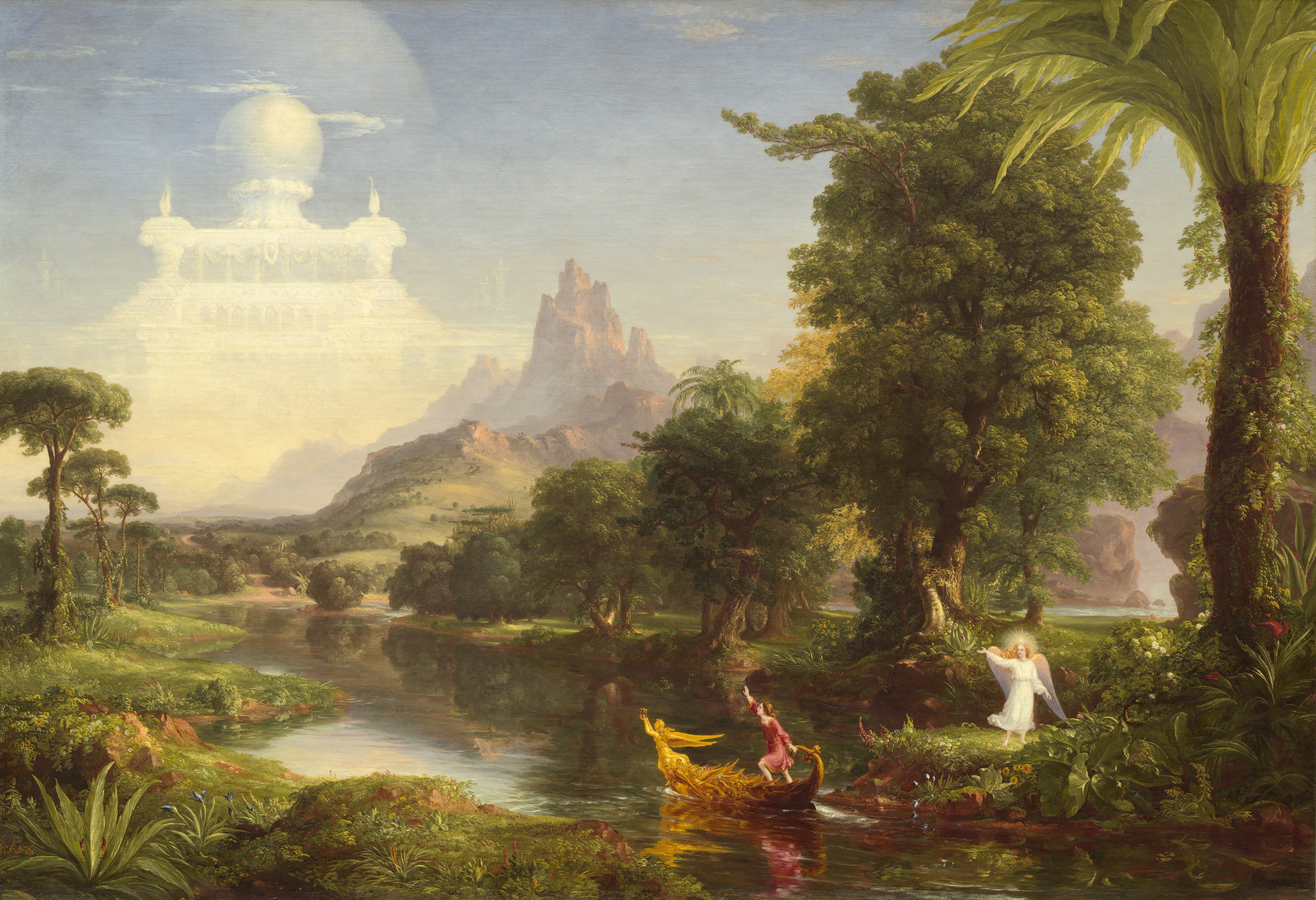
The Fourth Light of Advent—Man: Then God said, “Let us make man in our image, after our likeness; and let them have dominion over the fish of the sea, and over the birds of the air, and over the cattle, and over all the earth, and over every creeping thing that creeps upon the earth.” So God created man in his own image, in the image of God he created him; male and female he created them. And God blessed them, and God said to them, “Be fruitful and multiply, and fill the earth and subdue it; and have dominion over the fish of the sea and over the birds of the air and over every living thing that moves upon the earth.”—Genesis 1:26-28
God Must Come Down to Man
Sheen then asks, “Why should the law stop with man? Is there something higher that can come down to man, on the one condition that man die to himself?”8 Indeed, there is something higher: God’s Kingdom. And, just as man must reach down to the plant or the animal kingdom in order to raise them up to a higher plane of existence, God must come down to man. But, God will not simply take man up without his consent as man does with the lower forms.
In the Gospel of Luke, Jesus says, “The kingdom of God is not coming with things that can be observed . . . For, in fact, the kingdom of God is within you.”9 Because of the Mystery of the Incarnation, the Kingdom of the Spirit is already within us, among us, in our midst. But, full participation in the Divine Life can only happen if a man willingly “dies to himself.” In other words, he must let go of all that is evil about himself: Anger, covetousness, envy, gluttony, lust, pride, and sloth. Easier said than done, as we well know. “Not many men want to die to their lower selves; it costs so much,” Sheen says.10
Very few of us can truly die to ourselves in the way Sheen is suggesting. But, a handful of us, here and there, have accomplished it—think of the great saints and martyrs—so that should give us hope that it is at least possible. In the past, Advent had a much more penitential quality. Could it be time to return to a more disciplined observation of this sacred season? Perhaps through prayer and fasting we can make progress in our efforts to relinquish those things that prevent us from fully experiencing God’s Kingdom.
Adam & Eve’s Day (Christmas Eve): God said, “You shall not eat of the fruit of the tree which is in the midst of the garden, neither shall you touch it, lest you die.” But the serpent said to the woman, “You will not die. For God knows that when you eat of it your eyes will be opened, and you will be like God, knowing good and evil.” So when the woman saw that the tree was good for food, and that it was a delight to the eyes, and that the tree was to be desired to make one wise, she took of its fruit and ate; and she also gave some to her husband, and he ate. Then the eyes of both were opened . . . —Genesis 3:3-7
Then the Lord God said, “Behold, the man has become like one of us, knowing good and evil; and now, lest he put forth his hand and take also of the tree of life, and eat, and live for ever”—therefore the Lord God sent him forth from the garden of Eden, to till the ground from which he was taken. He drove out the man; and at the east of the garden of Eden he placed the cherubim, and a flaming sword which turned every way, to guard the way to the tree of life.—Genesis 3:22-24
Bringing the Lights of Advent to Children
How can we convey the central message of the Advent verse to children, and perhaps better understand it ourselves? With young children it’s important not to do too much talking at them. The Four Kingdoms of nature and their relationship to man’s four-fold nature are ideas that can be understood by children if they are presented simply—there’s no need to go into Aquinas’s philosophy!
Spend Time in the Natural World
Make it a priority to get children outside and into nature. It is in the natural world that they can most easily engage with the other kingdoms. Take meandering walks on Sunday afternoons in Advent. Collect little treasures along the way—beautiful stones and festive greens can be used on the season table. Give special attention to each week’s featured kingdom. On the first Sunday, observe the Kingdom of Stones—rocks, soil, clouds in the sky, snowflakes, and raindrops. On the second Sunday you can point out the Kingdom of Plants in the landscape—evergreens, berries, and fallen leaves. On the third Sunday, you can observe the comings and goings of the Kingdom of Beasts—squirrels and birds are busy foraging, and a birdfeeder will bring them even closer.
Bring children to high heights where they can see Creation in all its splendor. Bundle them in layers of wool and let them gaze at the stars on a clear, cold night—point out the constellations if you know them; if you don’t, find a good guidebook (The Glow-in-the-Dark Night Sky Book is one of my favorites).
The Golden Guides from St. Martin’s Press are beautifully illustrated, affordable, and easy to tuck into a pocket for an afternoon hike. Ecological literacy is on the decline, but you can learn the names of things and teach them to your children. I love to venture into the landscape and know what it is that I see. It gives me joy to say, “You are a house sparrow,” or “You are a trillium.” You can find all of the available Golden Guides titles here.
Advent Season Table
One creative way to bring the Lights of Advent to children is to create a seasonal display, adding new elements each week that correspond to the stanzas of the Advent verse.
- The first week, set the scene and add items from the Kingdom of Stones—geodes, crystals, shells, rocks collected on nature hikes, etc.
- The second week, add items from the Kingdom of Plants—Christmas greenery, flowers, dried moss, etc.
- The third week, continue to build the scene by adding items from the Kingdom of Beasts—little wooden figurines of sheep and other stable animals, wool creations, etc.
- In the final week, add items from the Kingdom of Man—figurines from a nativity set are perfect for this, especially Mary and Joseph, and the shepherds.
- On Christmas Eve, you can add the Christ Child to the scene, and it will be complete.

Advent Wreath
If you don’t have enough space for an Advent season table, an Advent wreath could be built up over the four weeks of the season in a similar way. Start with a metal or wooden Advent candle holder with four holes, or perhaps four separate candle holders arranged in such a way that there is an open space in the middle. Add the candles (the color order is purple, purple, pink, purple). In the open space you can add elements from the Four Kingdoms in the same way as described for the season table (above).
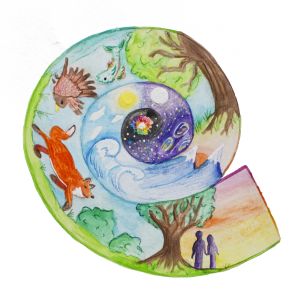
Creation Spiral
You might also enjoy making a Creation Spiral with your children (or even just for yourself). There are many ways this could be done: Colored pencils, paints, or collage-style with magazine clippings, printouts, or photographs. The point is to experience the unfolding of Creation, with the appearance of each of the Four Kingdoms proceeding outward in an orderly fashion.
It’s important to note that the spiral shape is not an arbitrary choice for this activity. The Fibonacci Spiral or Golden Spiral can be found throughout all of Creation, from pinecones and nautilus shells to the farthest reaches of the universe in spiral galaxies. Even our DNA, present in every cell in our bodies, displays characteristics of this special shape.11 The spiral is at the basis of all life and points toward order and intent in the universe—it is a design that is obviously important to God and, therefore, to us.
You could create your spiral in one sitting or spread the project out over the four weeks of the season. Perhaps a little work could be done on the spiral after you light the candle on each of the Sunday evenings of Advent.
I’ve created a Creation Spiral template that you can print out and fill in using whatever materials you’d like, or you can cut along the lines and then trace it onto a more robust paper if you desire (click here to download PDF file).
Recommended Reading
These books for children do a wonderful job of demonstrating the intricate relationships that exist between each of the four kingdoms of nature.
A Final Thought
Man wants three things: Life, knowledge, and love. The life he wants is not two more minutes, but the fullness of life without wrinkles, worry, or old age. The truth he wants is not only the knowledge of geography to the exclusion of literature or the truths of science to the exclusion of philosophy; he wants to know all things. Man is incurably curious. Finally, he wants love. He needs it because he is incomplete within himself. He wants a love without jealousy, without hate, and above all, a love without satiety—a love with a constant ecstasy in which there is neither loneliness nor boredom . . . Pure Life, Pure Truth, Pure Love . . . that is the definition of God. He is the ultimate goal of life; from Him we came, and in Him alone do we find our peace.—Bishop Fulton Sheen12

NOTES
Note 1 “Kingdom of the Spirit” borrowed from Michael Martin’s essay “Entering the Kingdom.”
ENDNOTES
1 Jean Lauand, “Basic Concepts of Aquinas’s Anthropology,” in Filosofia (São Paulo: Instituto Brasileiro de Direito Constitucional, 1997)
2 Joseph M. Magee, “The Four Causes,” www.AquinasOnline.org
3 Magee
4 Fulton Sheen, Life is Worth Living (San Francisco: Ignatius Press, 1999), 18
5 Sheen, 20
6 Ibid., 114
7 Ibid., 115
8 Ibid.
9 Lk 17:20-21, RSVCE
10 Sheen, 116
11 John R. Simmons, “Fibonacci Numbers and Nature,” The University of Georgia, http://jwilson.coe.uga.edu
12 Sheen, 18

